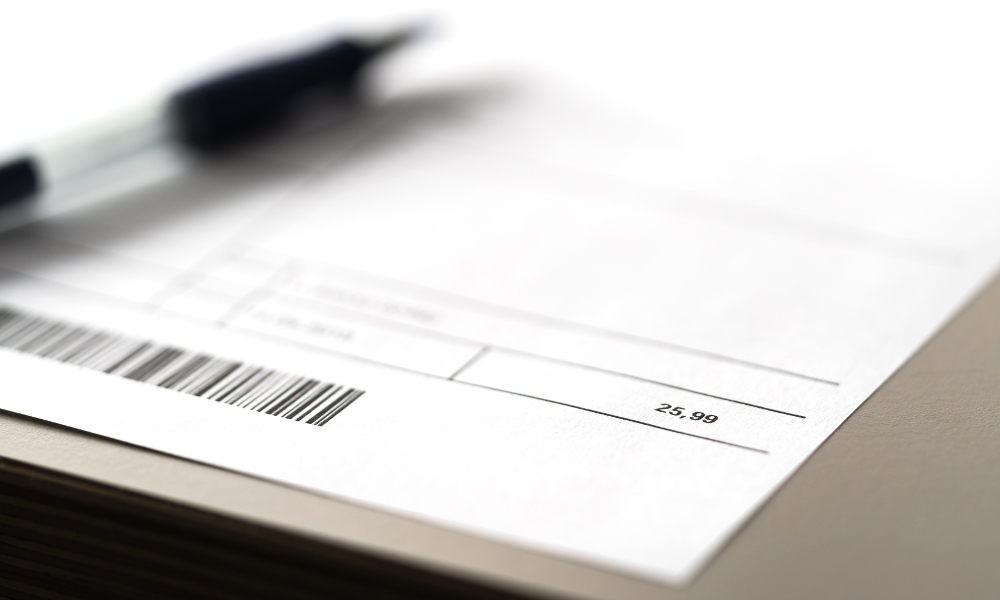How to Process a VAT Only Invoice
Posted 5 years ago by Tracy

Businesses with VAT taxable turnover of more than £85,000 must register for VAT with HMRC. Alternatively, if a business’ VAT taxable turnover is less than this, voluntary registration is permitted.
Once a business is VAT registered, typically it charges output VAT on its supplies (at the VAT standard rate of 20%, or another rate as applicable) and will claim back the input VAT paid on business purchases. Note that the process of calculating how much VAT to reclaim from / pay to HMRC can differ if a business is in a different VAT scheme, such as the Flat Rate Scheme.
Being VAT registered brings its own set of requirements that businesses should comply with. In particular, there is a practical issue that many newly-registered VAT businesses face: how to charge VAT on an invoice?
In some cases, a VAT only invoice is the chosen option. Find out more about how to process a VAT only invoice below.
Why would you need to issue a VAT only invoice
According to HMRC guidance, from the Effective Date of VAT registration, business must charge the correct amount of VAT, pay any VAT due to HMRC, file VAT returns with HMRC, meet VAT recordkeeping requirements and keep a VAT account.
However, after a business registers for VAT it won’t immediately receive its VAT number, and VAT cannot be charged or shown on an invoice until the VAT number is received.
This leads to a practical problem for businesses that may need to invoice clients for goods or services sold during this period between registering for VAT and receiving their VAT number; how do you invoice a client correctly to take into account the VAT that will apply, but cannot yet be charged?
What does HMRC guidance say?
HMRC’s preferred solution to this invoicing problem is that businesses in this situation should increase their prices to allow for the VAT that will be charged on these sales, and to tell their customers why this measure has been taken. Then, once the business has its VAT number, those invoices should be reissued to show the VAT.
As an aside, some practical suggestions as to how you can tell your customers about the approach your business is taking while VAT registration is processing include noting on the invoice(s) that VAT registration is pending. You might also confirm this position in the covering email that accompanies the invoice(s).
Where do VAT only invoices come into this?
Sometimes, a business might decide to issue an invoice without VAT, and send the client a VAT only invoice at a later date, once the business’ VAT registration number and date of effective registration is known.
How to process a VAT only invoice on AccountsPortal
If you have issued a VAT only invoice, the below steps should be taken to process that invoice on AccountsPortal’s system.
-
Enter the original sales invoice net of VAT. If the VAT Rate field is visible in your line item, assign the ‘No VAT’ code.
-
Once your business has its VAT registration details, create a VAT Status in the Settings of your organisation, making sure to specify the correct Valid From date (which should coincide with the Effective Date from HMRC).
-
Create a Credit Note for the same amount as the original invoice using the No VAT code in the line item.
-
Create a new Sales Invoice for the original amount but use the appropriate VAT Rate for your business (e.g. 20%) in the line item. The total of the new invoice should be the original invoice plus the VAT amount.
-
Allocate the Credit Note from step 3 to the invoice from step 1.
Accounting Records
A final note on recordkeeping requirements. It’s worth bearing in mind that, ordinarily, a VAT invoice should be issued within 30 days of the date of supply or the date of payment (where you’re paid in advance). However, where your business is newly-VAT registered, and have not received your VAT registration number, the VAT invoice should be issued within 30 days from the date HMRC advises you of your VAT registration number.
AccountsPortal can help your business comply with your VAT requirements, including Making Tax Digital for VAT and businesses using the Flat Rate Scheme or cash basis. Try AccountsPortal for yourself with our 30-day free trial.
Further Reading
How to Register as a Sole Trader
How to Leverage Technology and Automation to Support Your Firms Growth